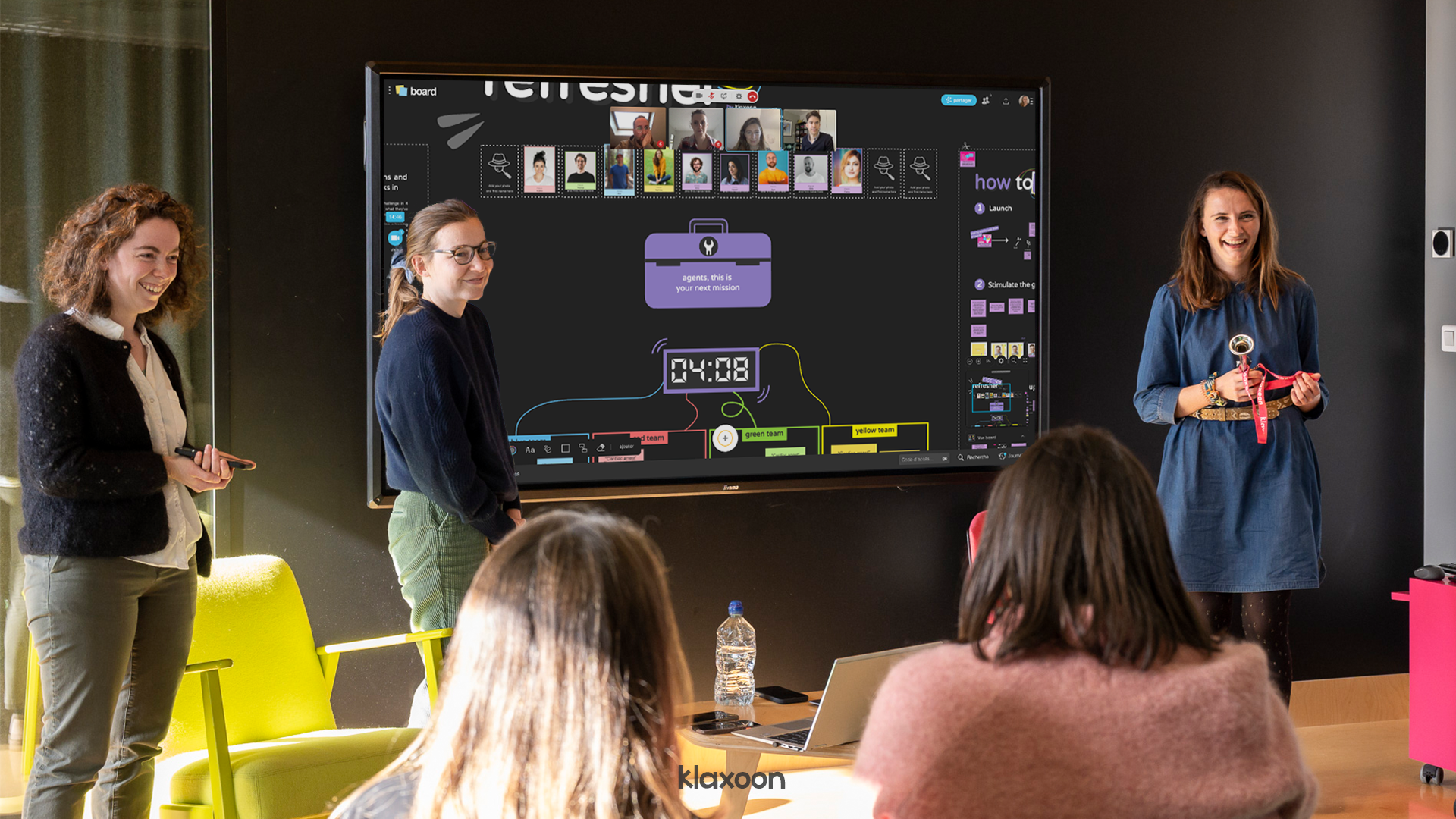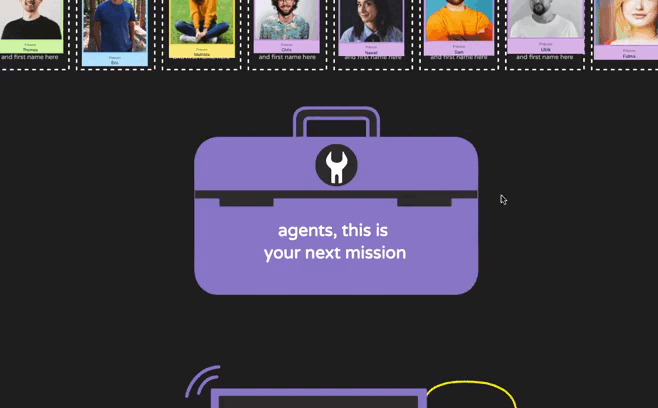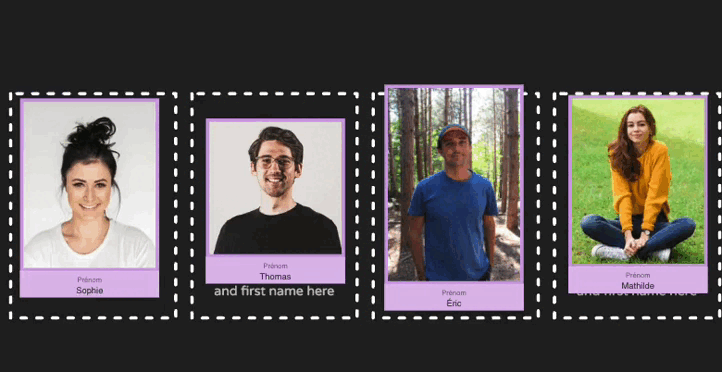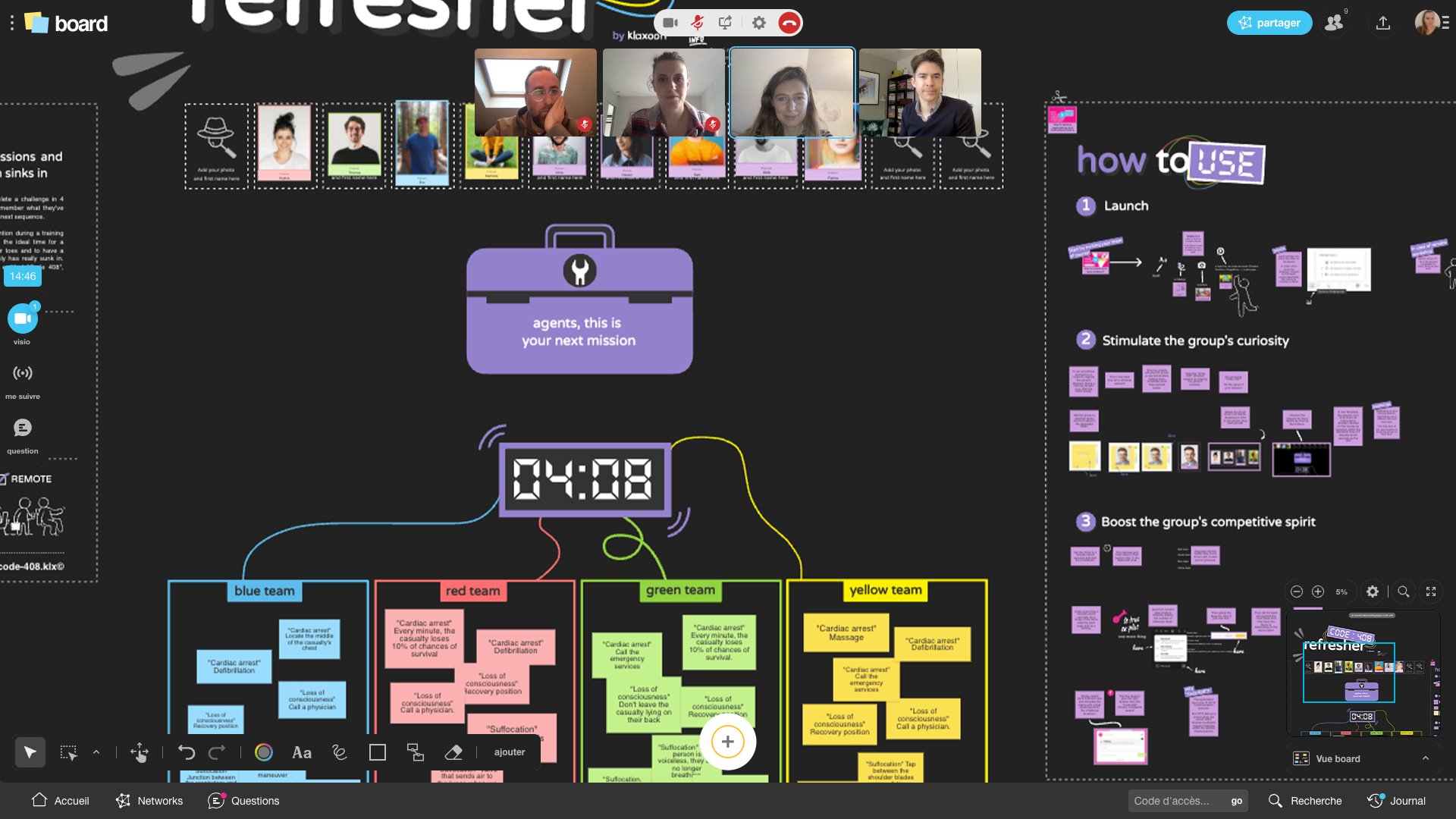“Code 408” refresher: a team-based mission to liven up the training session
Published on February 14, 2025
“Code 408” refresher: a team-based mission to liven up the training session


It can sometimes be hard to capture trainees' attention during a training session, especially after the lunch break. This is the ideal time for a refresher, a fun activity to keep the group on their toes and to have a recap to make sure what they've learned previously has really sunk in. That's precisely the dual objective of this template, mysteriously entitled "Code 408".
Refreshers are often used between two different modules in a training session. Before moving on to the next sequence, liven up the group and switch them back to study mode by encouraging them to participate, stimulating their curiosity and eagerness to learn.
After a break, a refresher is also useful to have a recap of previously covered items to check that the information has sunk in by collecting feedback.
A refresher is a special moment apart from the training session itself. It can be presented in various formats, lasting between 5 and 45 minutes.
This refresher, entitled “Code 408”, is a short workshop that should last about twenty minutes. Where does this mysterious name come from? This code name brings an element of fun that piques the group’s curiosity and makes them want to know more and take part.
The group is given a mission...that they must complete within a very tight timeframe: 4 minutes and 8 seconds flat...4”08’!
We have suggested a mission on the template: the trainees must note down as many items covered on the course as possible, in 4 minutes 8 seconds. You can of course rename the mission to suit your own timeframe. The idea is to give your trainees a mission they can complete within the allotted time. The aim is to summarize the key items covered previously. The coach can check whether the information has sunk in and if necessary, have a recap of some items with additional details or an exercise to dig deeper into the subject.
And for a reference to the name “Code 408”: the explanation lies within the IT HTTP communication protocol. A “408 Request Timeout” error occurs when the server has not received a complete request within the allotted timeout period.


With Code 408, ask your training group to accomplish a special mission!
Participation is key in any workshop, meeting and training course! So don’t be afraid to engage your trainees as much as possible. Their role is not just to sit back quietly and listen to you; they must be proactive and participate. To keep your trainees on their toes, you need to capture their attention. Depending on group size, the topic covered, the duration of the module...their attention might drift. Keep your audience focused with a refresher between two sequences! “Code 408”, fun and quick, is ideal.
The Board’s embedded Timer function is easy to use and will be a good stimulus. Working within a limited timeframe means working fast and efficiently. Participation and collaboration are key to completing the mission as a team. Working toward a time-limited objective is a booster. The coach can regularly call out the remaining time to add some pressure: “3 minutes left”... “2 minutes”... “1’30”... “1 minute”...
Code 408 is a team-based challenge, where everyone wants their team to win: it appeals to the group’s competitive spirit. This is not mission impossible. All you need to do is pay attention during the course, and recall what you’ve learned as quickly as possible. An additional motivation for team members to be diligent and focused: it’s a win-win situation!


The group is broken down into 4 teams with different colors, who place their photo and name in an idea with the associated color. The coach sets the timer and the refresher starts!


Each team posts as many ideas as possible, in relation to the concepts covered during the previous modules. When the time’s up, the ideas of each team are counted. It also requires interaction: some concepts can be elaborated on or more detail can be provided if necessary. If the coach notices that something has been missed out, they can go back over a particular chapter and make sure that everyone has understood the key points.
Then, the coach uses the Challenge question for the final step, where the first person to give the correct answer wins the round for their team. It’s up to you to pick the question, depending on the topic or what was said earlier.
Overall, the workshop lasts less than 20 minutes and is a dynamic and efficient bridge between two training modules. You can adapt it and reuse it as often as necessary, for example if your training course takes place over several days. Copy it onto the Board to use it several times.
A refresher is not the same as an icebreaker. Icebreakers are used at the beginning of a session to break the ice, encourage the group to get to know one another and stimulate creativity. A refresher is used between modules: for instance before you start on a new module, to recap what was covered the day before, or after the lunch break. Try it out!


Get inspired by other templates from the same categories
Unlock your teamwork potential